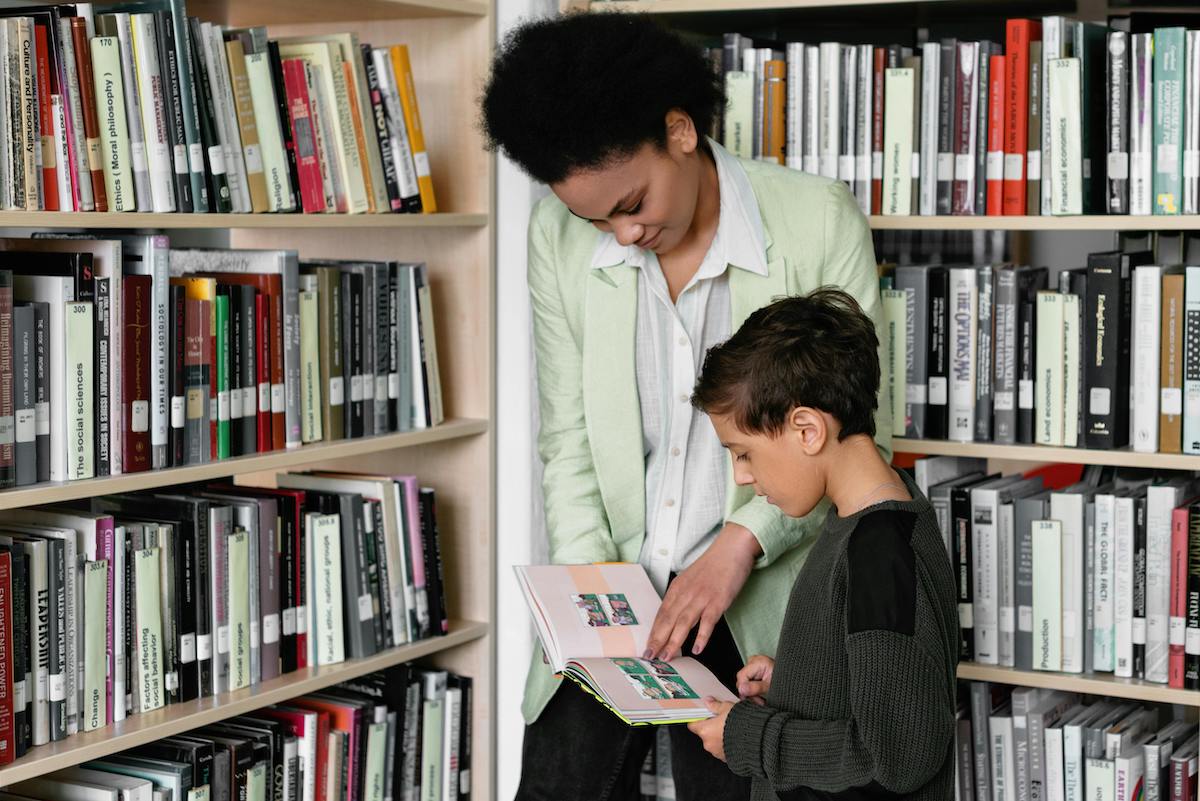There are many ways that schools can expand parent involvement: parent volunteer programs, parent-teacher conferences, parent activities, focus groups, and ongoing communication through newsletters or phone calls.
There is a use for every tactic, but they all take a great deal of coordination, time commitment, or unique situations to be effective. Social walls provide a compromise: an easy-to-use, low-barrier alternative that you can easily incorporate into what you’re already doing at school. They’re fun, interactive, and augment your current parent involvement strategies without supplanting them.
Here’s how they do it: schools are already posting moments on social media—classroom activity, student projects, school events. Social walls simply collect these posts into one organized display that families can access on your website, hallway screens, or during events. No additional posting necessary, no new sites to get used to, simply additional exposure for the content you are already posting.
How Can Social Media Displays Be Used to Strengthen Parent Communication and Involvement in School Life?
Social walls transform student-to-parent communication into interactive, transparent windows into the school day. Here is how they establish more robust engagement:
Live feeds that keep everyone informed. Instead of waiting for newsletters or phone calls, parents get to see what’s happening in real-time with their children—morning announcements, class work, and even small victories throughout the school day. This live visibility allows family members to be part of their children’s education without requiring teachers to put in extra effort. With Juicer, schools have the option to change refresh rates from hourly updates to live feeds, depending on their needs and activities.
Displaying student work promotes pride and discussion. When students observe their own work, class activities, or performances posted where other community members will view it, it reinforces confidence and communication. Parents have ready conversational openings at home: “I saw your science project on the school bulletin board—tell me about it!”
Generating openness regarding school culture. Parents are able to observe how their children interact with other children, what lessons are like in different subjects, and how teachers assess achievement. This openness generates confidence and makes families feel more in touch with their children’s day-to-day life.
Less administrative work and improved communication. Social media post addresses frequently asked questions regarding event dates, due dates, and school news before parents have to call the office. This saves administrative time and keeps everyone more informed.
Supporting all types of family engagement. Whether it’s grandparents who can’t attend parent-teacher conferences, working parents who miss school events, or family members who don’t speak English fluently, social walls provide accessible ways to stay connected to the school community.

What Types of Content Resonate Most with Parents When Featured on a School Community Display?
Not all social media content works equally well for parent engagement. The most effective displays feature content that builds emotional connection and helps parents understand their children’s daily experience:
Student achievements and milestones that help parents celebrate their children’s growth:
- Reading level improvements and academic progress
- Completed projects and creative work
- Sports accomplishments and extracurricular achievements
- Skills development in areas like social skills or problem-solving
Classroom projects in progress that show parents what their kids are actually doing during the school day:
- Science experiments and hands-on learning
- Art installations and creative collaborations
- Group presentations and peer learning
- Cross-curricular projects that connect multiple subjects
- Student-led initiatives and leadership opportunities
Event photos and behind-the-scenes moments that help parents feel part of experiences they might have missed:
- Field trips and educational outings
- Assemblies and school-wide celebrations
- Performances and student showcases
- Classroom celebrations and special activities
- Candid moments that capture school culture
Parent shoutouts and community contributions that build emotional connection:
- Volunteer appreciation and recognition
- Family cultural sharing and expertise
- Parent involvement in classroom activities
- Community partnerships and support
Teacher insights and learning context that help parents understand the educational value:
- Brief explanations of why certain activities matter
- Connections to curriculum goals and standards
- Skills students are developing through various activities
- Learning progressions and next steps

What Strategies Help Schools Successfully Encourage Parent Participation and Content Sharing on Social Media Walls?
Getting families to contribute content requires intentional strategy. The most successful schools implement these practical approaches:
Use branded hashtags consistently across all communications:
- Create school-specific tags like #LincolnElementaryLearning or #RiversideMiddleFamily
- Promote them everywhere—newsletters, websites, classroom doors, event signage
- Train teachers and staff to use the hashtags in their own posts
- Include hashtags in all event announcements and school communications
- Make hashtags memorable and easy to spell
Install clear call-to-action signage throughout the school:
- Place simple signs near pickup areas: “Share your photos with #OurSchoolName—see them on our community display!”
- Add signage in event spaces and by classroom doors
- Include QR codes that link directly to posting instructions
- Use visual examples of what types of content to share
- Make participation feel welcoming, not mandatory
Implement strong privacy controls and moderation from day one:
- Use tools like Juicer that let you approve posts before they appear publicly—no surprises or inappropriate content
- Filter content by keywords to ensure appropriate material
- Set up automatic moderation for common issues using Juicer’s built-in filters
- Train the social media manager on moderation best practices
- Set clear guidelines for what content will and won’t be featured
Juicer’s moderation dashboard simplifies this: you can view all new posts in a single location, approve them with a single click, and define filters that automatically catch problem content. This means the person responsible doesn’t need to monitor social media constantly—just check the dashboard when convenient.
Showcase parent-submitted posts prominently to encourage more participation:
- Highlight parent stories and contributions on the main website
- Send thank-you messages to families whose content is featured
- Create special recognition for active community contributors
- Use parent content in newsletters and communications
Make participation obvious and rewarding for all family members:
- Send clear, step-by-step instructions for how to participate
- Show families the impact of their participation on the school community
- Provide examples of effective posts and content ideas
- Offer multiple ways to participate beyond just social media posting
Start small and build momentum gradually:
- Begin with one class, one event, or one month to test the concept
- Focus on quality engagement rather than quantity of posts
- Gather feedback from participating families and adjust strategies
- Expand successful approaches to other areas of school life
Juicer makes testing easy with its multi-feed capability—you can set up various layouts for various departments, grade levels, or events from a single dashboard. This allows you to test drive what will work best for your school community without fully committing to a whole school roll-out just yet.
Want to see how social walls could work for your school? Juicer offers a free plan that lets you test the concept with one social feed before expanding to larger implementations.
Why This Approach Works for Modern Parent Engagement
Students do better when families believe they are learning partners. Studies consistently correlate parent involvement with improved attendance, increased grades, and improved social skills.
But involvement does not mean attending every meeting or serving on every committee. It means feeling part of it, hearing about and seeing what is taking place in your child’s life.

Social walls make this possible by:
- Removing barriers for busy families who can’t attend traditional events
- Offering openness that generates confidence between home and school
- Providing natural ways of families celebrating their children
- Supporting different types of engagement based on family needs and schedules
- Strengthening the overall school community through shared experiences
Ready to build a social wall that increases parent involvement at your school? It’s easy with Juicer to collect content from any source, approve posts before they are live, and showcase it all where your community will notice.
Frequently Asked Questions
How can social media help with parent engagement at school?
By making classroom and school information more visible and accessible—on websites, bulletin boards, or in events—so parents can find out what’s going on without needing to ask. This lowers the barriers for busy families and creates more possibility for actual connection.
What’s the best way to invite parents to participate in school events?
Make a quick hashtag for families to use when posting photos or updates, and project those posts throughout the event itself. That way everyone is included in the moment, even if they’re not actively helping with organizing or presenting.
Is it safe to display social media content in schools?
Yes, especially with moderation features that enable you to censor posts by account, keyword, or hashtag, and approve content before it goes live publicly. This way, only appropriate, school-friendly content reaches the community.
Do social media displays actually improve student outcomes?
Better parent-school relations are associated with attendance, increased test scores, and homework completion at home. Displays are an easy way of establishing that relationship, particularly for parents who are not able to get involved in other methods.
What if most parents don’t use the same social media platform?
A social wall collects posts from several sites—Instagram, TikTok, Facebook—into one feed so no family members are left out due to their favorite app.
How can schools use social media to support parent-teacher conferences?
In the days preceding conferences, social streams can showcase new student work, offer communication tips, or give lighthearted reminders regarding meeting times. Following conferences, they can reaffirm main points or action items from meetings.
What’s the difference between family engagement and parental involvement—and how do social displays support both?
Parental involvement generally implies specific activities like homework help or event attendance. Family engagement is more inclusive: any family member feeling connected to a child’s learning. Social media displays support both by making student life visible to all types of caregivers—parents, grandparents, siblings, or guardians.
Can social media displays reduce administrative workload?
Yes—if strategically utilized, they respond to frequent inquiries regarding event dates, deadlines, and school announcements prior to parents contacting the office. It saves time for the administration and keeps everyone better informed.
How should schools prepare for implementing social media displays next school year?
Begin planning during the summer: develop a plan for hashtags, get moderated feeds set up through tools such as Juicer, and determine guidelines for what is posted. Utilize the start of the school year to educate families on how to follow along and contribute.




